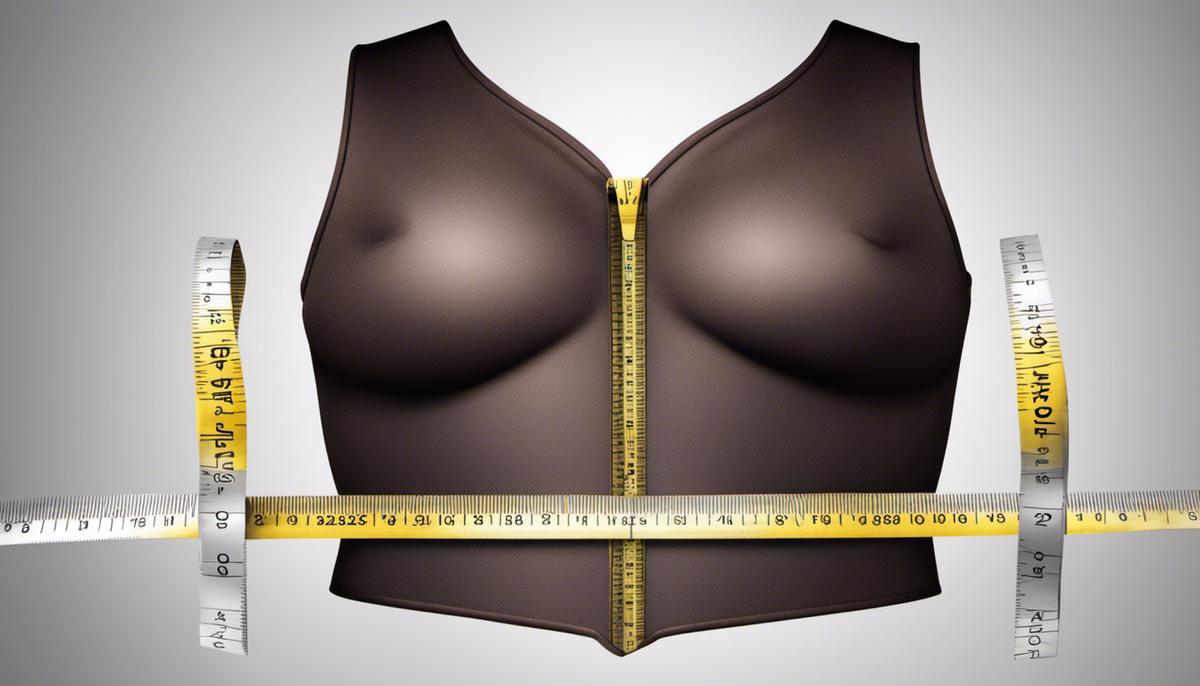With relevance in numerous areas of daily life, chest girth measurement continues to be an often-overlooked necessity. As simplistic as it may seem, understanding the essence of the concept, the method for its measurement, and knowing how to interpret as well as apply results is a skill worth mastering. This understanding extends beyond correctly choosing apparel to influence health monitoring and fitness progression. In this discourse, we deep dive into the significance of chest girth measurement, its correct technique, and its practical application.
Understanding Chest Girth Measurement
Understanding Chest Girth Measurement
Chest girth measurement is the process of measuring the circumference or distance around the largest part of the chest. This measurement is generally taken at the nipple line and should be done on a bare skin. It’s both a simple and important measurement that can be utilized in many different circumstances.
Importance of Chest Girth Measurement
Measuring chest girth is not only essential for size determination for clothing like shirts, jackets, or dresses but it’s also an important part of understanding your own body. For fitness enthusiasts or athletes, it can serve as an excellent metric for tracking progress, such as muscle gain or loss in the chest area.
Moreover, chest girth measurement is crucial in clinical practices. It forms a part of anthropometric measurements that are often used in nutritional assessments and for monitoring growth in children. In some cases, high chest girth measurements could point to an increased risk of chronic diseases such as heart disease.
Possible Uses of Chest Girth Measurement
From a practical standpoint, chest girth measurement is a fundamental part of garment fitting. Clothing designers and tailors will use these measurements to ensure that clothes fit correctly across the chest.
In the healthcare sector, doctors and nutritionists might use chest girth measurements to help assess a person’s overall health or risk factors for certain diseases. It is also used in respiratory health assessments, to monitor lung function and growth in children, and sometimes, to diagnose conditions like Scoliosis.
In fitness and body conditioning, individuals and trainers may use chest girth measurements to monitor changes in physique, particularly after a structured regime of diet and exercises.
The Concept behind Chest Girth Measurement
The concept behind chest girth measurement is straightforward; it’s fundamentally about measuring the circumference around the widest part of your chest. Typically, the measurement is taken when the person is in a standing position and after normal respiration, ensuring the tape is snug but not indenting the skin. This gives a more accurate measurement, avoiding overestimation or underestimation of the chest size.
Understanding the right method of chest girth measurement is important to ensure accurate results and comparisons over time. For instance, consistency in the time of measurement, positioning of the measuring tape, and standardizing whether it’s done over a light shirt or bare skin are critical to get reliable results.
Why Chest Girth Measurement Matters
The value of chest girth measurement extends beyond fitting into your favorite shirt. It’s a vital way to assess and monitor body changes, whether these changes are due to a workout regimen, dietary changes, a potential health condition, or the natural progression of aging. Taking accurate, regular measurements allows you to track these changes in a tangible way and make any necessary adjustments to your lifestyle or health routine.

Chest Girth Measurement Method
Step 1: Prepare for the measurement
Ensure the person being measured is wearing light clothing to get an accurate reading. Remove any bulky or restrictive clothing such as heavy sweaters, jackets, or bras with heavy padding. The person should stand straight with their arms relaxed at their sides.
Step 2: Position the tape measure
Hold the beginning of the tape measure in your right hand. Position it at the person’s armpit level across the back while standing at the person’s right-hand side. This ensures that the positioning of the tape is in line with the nipple line, which is generally the widest area of the chest and hence the right point to measure chest girth.
Step 3: Wrap the tape measure around the chest
From the armpit level, wrap the tape measure under the person’s arms and across the fullest part of their chest, usually on the nipple line. Be sure the tape measure is level all the way around the chest.
Step 4: Improve accuracy
Ensure that the tape is snug against the skin but not too tight; it should not cause compression of the chest. The tape should not be twisted or rolled. Also, ensure that the person being measured is not holding their breath, as this may artificially increase the measurement.
Step 5: Record the measurement
After ensuring the tape measure is properly positioned and level, record the number where the start of the tape measure meets the remaining tape. This number is the person’s chest girth measurement. It is advisable to repeat the measurement a couple of times to verify that the measurement is accurate.
Remember, measuring chest girth is most accurate when done by someone else rather than trying to measure oneself. It’s also good practice to take measurements at the same time of day if multiple measurements are needed, as chest size can change throughout the day due to various factors like food intake and exercise.

Practical Application and Interpretation of Measurements
Understanding Chest Girth Measurements in Clothing Selection
Chest girth measurements play an integral part in selecting the correct clothing size, particularly for tops, jackets, and dresses. The measurement can help determine the size that fits you best and is more accurate than relying on general sizing that varies between brands. To find your chest size in relation to clothing, use a cloth measuring tape and check size charts for the brand you are purchasing from. Keep in mind that sizes may vary between brands, hence the importance of knowing your actual chest measurement.
Chest Girth measurements and Health Monitoring
Chest girth measurements are also vital in monitoring health. They can alert you to possible health risks before they become severe. For instance, an increase in chest size might indicate weight gain, which, if significant, could elevate the risk of certain health conditions like heart disease or type 2 diabetes. Regular self-measurement can, therefore, act as an early warning system and encourage lifestyle modifications.
Application of Chest Girth in Fitness
In fitness, chest girth measurement can help you keep track of your progress. It can help ascertain if workouts aimed at building chest muscles or losing fat around the chest area are effective. An increase in chest girth could signify muscle growth while a decrease could mean fat loss. If the measurement stays constant, it may imply that your workout routine or diet may need some adjustments.
Interpreting Chest Girth Measurements
Interpreting your chest girth measurement is just as crucial as taking the measurement. If the number is larger than what’s considered healthy for your height and weight, it may mean you have excess body fat which poses health risks. For fitness purposes, if the measurement isn’t changing as per your goals (increase or decrease), it suggests you need to intensify or change your current fitness regimen. Lastly, understanding the exact measurement will enable you to select the right clothing size and enjoy a more comfortable fit.
Personalizing Chest Girth Measurements
Personalization is key based on individual goals such as losing weight, toning muscles, or even just maintaining current weight. It is important to seek advice from health and fitness professionals to better understand what your measurements mean and how to make appropriate adjustments.
There is also a need to recognize the potential variability in measurements due to factors such as breast size in women or muscle mass in those who engage in targeted weight-training. These factors can impact the chest girth measurement and should be taken into account when measuring and applying the results.

Through the comprehension and correct implementation of chest girth measurements, one can leverage a tool that enhances wardrobe selection, health monitoring, and fitness progression. Having explored the depths of the method, its significance, and the proper interpretation of the results, you are now well-equipped to incorporate the knowledge into your routine. Your understanding will consequently foster a higher standard of living, helping you maintain your health, and tailor optimal solutions to your clothing and fitness needs. The power of such a simple measure is truly profound, transforming a simple inches-or-centimeters number into a tool of understanding and improvement.
